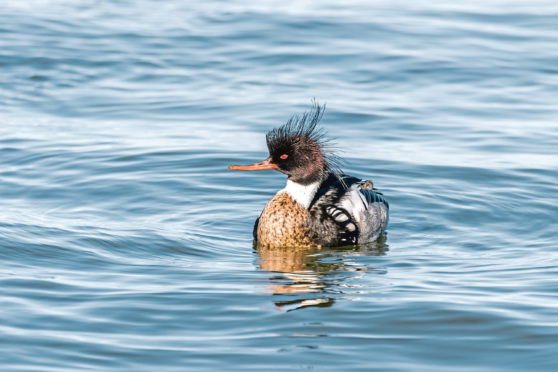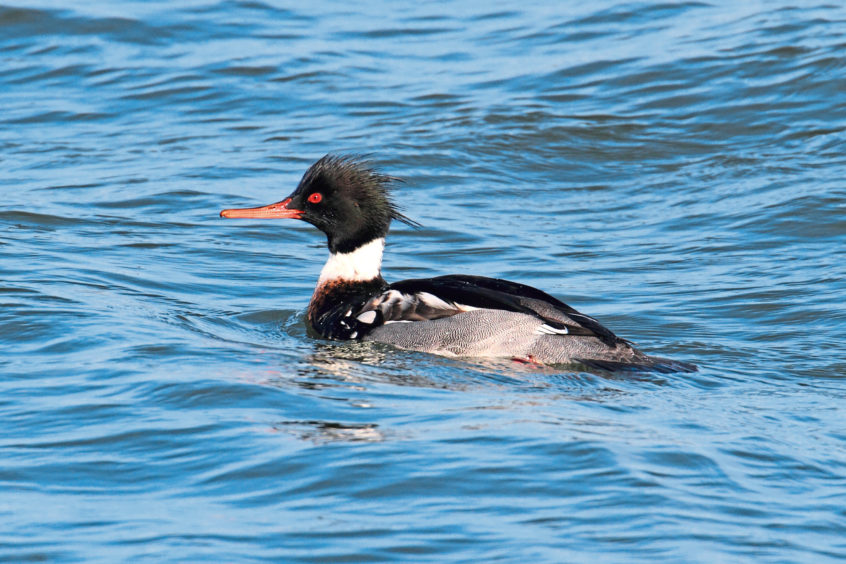Red-breasted mergansers belong to a group of ducks known as the ‘sawbills’, so called because of the serrated edges to their bills, designed for gripping slippery fish.
It’s all about finding the right opportunity – and this pair of red-breasted mergansers fishing close to the shore at St Cyrus had certainly found that.
Despite the air being still, rolling breakers were crashing into the shore with some ferocity. But the power of the surge had created a small protective sand bar a short distance further out, which in turn provided a calm channel close to the beach.
It was here the mergansers fished, a good spot for catching small flounders, and where gulls had also gathered close to the water’s edge. I’m not a regular enough visitor to St Cyrus to know whether this narrow channel is always there, but I suspect not, for the coast here is such a dynamic environment, constantly scoured by the tidal currents, wave-topped seas and the outpourings from the nearby River North Esk.
I was here bright and early, the sun just having risen above the far horizon and there was not a soul about. The mergansers fished for several more minutes, the pair frequently diving together in unison. I wondered if there was teamwork going on here, with both sweeping the shallow channel in a broad front so as to flush out flatfish buried in the sand.
On the distant cliffs, fulmars prospected their nesting ledges and a short while later a stonechat alighted on the branch of a washed-up tree trunk right in front of me, before flitting away across the sand-dunes. This was wildness at its best, but it was time to go, for I was keen to explore nearby Johnshaven.
Bur shortly after drawing away from the St Cyrus nature reserve visitor centre, I brought my car to a juddering halt. A grassy field adjacent to the lane was full of curlews, their long-curved bills silhouetted against the low winter sun. It had been a while since I had seen so many of these wonderful birds together at one time, content in the company of their own kind as they busily probed for worms.
Curlew numbers are in freefall, resulting in the bird being described as ‘the most pressing bird conservation priority in the UK’, and as I drove away once more, I pondered for how much longer it would still be possible to witness such large groups as this.
Just as how the mergansers had found opportunity at St Cyrus, then so too had a pair of turnstones I discovered soon after on the quay at Johnshaven. Turnstones adore fishing harbour quaysides, presumably because there is shellfish detritus left behind by fishers after landing their catch.
These attractive little waders breed in the Arctic, and are clearly opportunists too, seeking out good places to forage in winter before embarking upon their daunting migration back north. But then again, many creatures are opportunists in their own way, but as the plight of the curlew shows, that doesn’t always ensure survival in a rapidly changing natural world.











